As HMS Glasgow moves through the final stages of construction at BAE Systems’ Scotstoun shipyard, the Royal Navy’s newest frigate is already drawing comparisons not to her predecessors, but to submarines and aircraft carriers.
The last time I stepped onboard HMS Glasgow, she had not even touched water. The visit felt more like walking through a construction site than a warship. This time, the transformation was striking. From bare steel and scaffolding to a ship with clear shape, identity and purpose, Glasgow now feels alive.
As someone who spends a great deal of time boarding ships to tell you, the reader, about them, I can say this is perhaps the most spacious frigate of its class I’ve ever been on. The scale of the internal layout, the finish of the compartments, and the sense of quiet capability throughout all contribute to something remarkable.
Described by those overseeing her build as quiet, intelligent, and capable of withstanding serious attack, Glasgow represents a pretty big change in antisubmarine warfare.
Speaking from the bridge, Sean Scott, Supply Chain Director at BAE Systems, urged visitors to remember one thing: “Keep in the back of your mind—this is a frigate. When you look at the size of the available space and the level of capability, it really is state of the art.”
The ship’s size is immediately striking. “The bridge here is actually not far off in size from what’s on the carriers… for a frigate, that’s good,” Scott said. “You’ll have a navigator’s chair and a captain’s chair as well. We’re trying to give the RN as much capability as possible with the space available.”
That design philosophy extends throughout the vessel. From automation to survivability, the approach is based on precision and layered capability. “The five-inch gun, the magazine housing, the magazine feeds—it’s pretty much all automated to be controlled by one or two people, and at a rapid rate of knots,” Scott explained. “It’s designed to take an element of torpedo attack or enemy attack of any sort, shut that element down, and still carry on.”
Sir Simon Lister, Managing Director of BAE Systems Naval Ships, underlined the operational intent behind those design choices: “The basic requirement of the Type 26 is to hold a Russian submarine at risk in the North Atlantic.” That means not just finding a submarine but doing so undetected. “This ship is designed to beat the Russian submarine at that cat and mouse game, that stealth game.”
To achieve that, Glasgow has borrowed heavily from submarine design. “We’ve made sure that every equipment that makes noise on board has either been designed out or designed to operate quietly,” Lister said. “That’s bringing the disciplines of building a nuclear submarine into this ship, so that this ship puts very little acoustic energy into the water.” That design extends to the hull itself: “That hull is designed to cope with heavy weather. It’s designed to slip through the water quietly.”
Scott expanded on how that theory is executed in practice: “All the bracketry, all the pipe work, everything has been suppressed to stop any noise coming through as much as possible. So everything’s encompassed with sponge boots all the way through every single bracket, every single pipe hanger.” He added: “Every stud, every bracket, every pipe, every cable run, everything specifically in the design gives us the ability to maximise the space as much as possible, down to 0.5 millimetres.”
Acoustic performance is not just a matter of insulation, but of engineering tolerance. “Now we get them to measure to the millimetre to make sure it’s in line with the model. It also allows us to transfer the model into different programs digitally and keep that continuity all the way through the build.”
HMS Glasgow is still undergoing commissioning, but her capabilities are already becoming clear. “The current stage of the build that we’re in now is doing all what we call the termination, which is pretty much happening across the whole ship,” Scott said. “This is where we’re starting to venture into commissioning… that allows us to get everything signed off, which means that we can start to make the ship go live under its own accord.”
At full load, the ship weighs nearly 8,000 tonnes. “She’s built strong—built stronger than the Type 23,” Lister noted. “It’s the scale and the stability and endurance that means she’s… a really capable platform in rough conditions.”
From a weapons perspective, Glasgow brings a range of advanced systems online. “The Mk 45 gun… has a rate of fire, has a range, and a fire weight that far exceeds everything that was on the previous ship,” said Lister. “Sea Ceptor is a self-defence system first and foremost, but it does have area air defence capability too.”
That capability may grow over time. “Because the Mk 41 is there, we expect in time for this ship to be equipped with longer-range air defence missiles as well,” he added. “There’s something called the Mk 41 launcher which is a universal US launcher capable of taking a range of missiles to give it a strike capability.” “The Artisan 3D radar is very powerful. It’s selling very well around the world.”
But the heart of the Type 26 lies in integration. Lister describes the ship not as a platform, but as a node. “Whatever goes into that Mission Bay becomes a node of the combat system,” he said. “That Mission Bay is configurable in all sorts of ways to bring to sea the latest capability. Today it’s drones. Tomorrow it could be EW-equipped drones. The next, it could be hypersonic missiles launched from containers.”
That modularity is enabled by automation. “It has a multipoint crane… capable of launching and retrieving equipment… in sea state five.”
“The ship can take two Merlin helicopters,” Lister said. “The flight deck is huge, much bigger than anything on a Type 23. The Merlin helicopter is an extraordinary anti-submarine warfare helicopter… very powerful… can maintain a dip for long duration.”
“That ship really takes a supercomputer to sea,” he said. “It takes several server farms to sea, connected to communications, sensors and weapons.” The architecture is tightly engineered. “We’ve put all the computing applications onto shared infrastructure… that’s reduced the cooling and power consumption of the ship significantly.” Artificial intelligence plays a growing role. “Artificial intelligence [is] playing an increasing role in sorting the signature from the mass of data that you obtain.”
Scott emphasised that the design choices on Glasgow are tied to future export opportunities. “Every equipment type that you will see on the ship has gone through a rigorous amount of land-based testing and integration before it arrives on ship.” He added: “Once we’ve proven that capability, I’d say watch this space… between ourselves, Canada, Australia and potentially Norway, you will have a fleet of over 32 Type 26s.”
“The ship is capable of going in harm’s way,” Lister said. “Anti-submarine warfare in the North Atlantic is team sport.” And the Type 26, now fitting out on the Clyde, is designed to lead.
As Sean put it, “from a defence picture, it’s a really good deterrent… if you come across an ASW frigate with this level of capability, you’ll think twice about taking it on”.



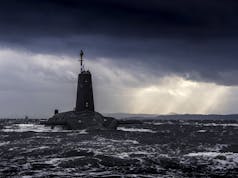
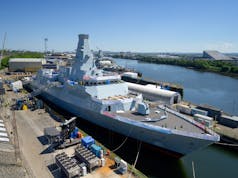
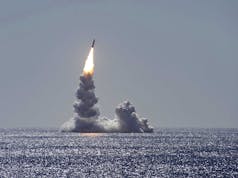
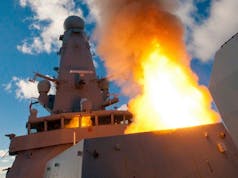
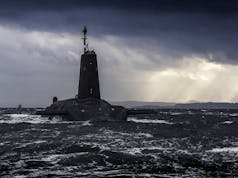


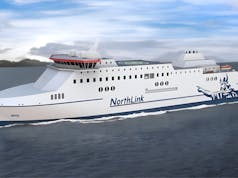


If you come across an ASW Frigate with this level of capability, you’ll think twice about taking it on”.
Absolutely spot on.
Now then, in how many years can we test that theory ?
” It’s my manner Sir” “your what” ?, “my manner sir, looks insobordinate but isn’t really” ” I can’t make out if your bloody bad-mannered or just half witted”‘
“I have the same problem Sir”.
One poor Merlin at most , no torpedos. why would any submarine be afraid of it?
Jesus man. That’s a monumental lack of understanding.
Ignore that’s up to his normal standard🙄
Typical of sycophants. Ad hominem…
“The ship can take two Merlin helicopters”
Look at this pearl. One cannot even go past the other. One needs to take off for the other to move.
And there is even a person Navy Lookout that says that he was told that entrance between hangar and mission bay don’t allows a Merlin.
I prefer the Italian FREMM : 1 Merlin, 1 NH90 in proper hangars, Milas missile.
FREMM isn’t in the same league. It’s old and noisy, just look at the engineering layout; what the submariners call a ‘target’. You should trawl ‘convergence zones’ on the internet and then you’d understand what the T26 is designed for. STWS tubes and their ilk are basically a defensive measure that will likely never be used. Even the scenario of ASROC fired from the Mk 41 is a little unlikely. The scenario for a real ‘sub hunter’ like the T26 is to send the Merlin over the horizon to the drop in on the target boat at the first convergence zone.
It’s toothless, it’s a very expensive target. Hopefully it never meets the opposition. No ship to ship, Torpedo? No offence at all. We may as well give up.
Oh don’t take it seriously Robert, It’s just a comments section on a rather good Website about UK (Scotland mostly) defence news.
“Sit back and enjoy the ride.”
Doh, because it can detect, track and sink them.
As for not having torpedoes. If a submarine is close enough for it to be vulnerable to ship-launched missiles then its commander has obviously gone bonkers. The heavy rate torpedoes that submarines can carry far out range those carried by ships.
But you never let facts prevent you dissing the British Armed Forces.
So why not have two AS options:
-Heavyweight 21″ AS Torpedoes, Ship launched.
-Missile launched lightweight Torpedoes.
The later to be either Containerised or for Mk41 launched.
It could be widely fitted to RFAs and other assets.
Eventually this will happen.
Milas missile is not in service anymore. There’s a handful of them left at best and none in production
Because… “Anti-submarine warfare in the North Atlantic is team sport.”
Merlin whilst dipping carries up to 4 Sting. Ray. Any Wildcat carrying ship can send another 2 Sting Ray. P8 can deliver Torps. Allied nation helos, aircraft and ships can deliver torps.
I have said the exact words quoted many times. ASW is a team sport.
BAE/Babcock mouthpieces could see double glazing to tent dwellers if they’d be gullible enough,just like this “cutting edge” stuff they spew out on every new build. Well,let’s see if they’re still “cutting edge” by the time the last one slowly crawls out of the shed.
I’m all for a good whinge, and the current state of the RN’s surface fleet is a mess in terms of numbers (and it’ll get worse before it gets better). But we do build great ships, we just need more of them.
“Two Merlin helicopters…” What does that mean positionally? One in the hangar and one on the flight deck? One in the hangar and one in the mission bay, because I’ve previously been told it wasn’t practical to move a Merlin from the mission bay to the hangar? Two in the hangar, because I’ve also been told the hangar won’t be wide enough for that? Any thoughts, anyone, as to what he means?
It is BS.
But the text is even incomprehensible in certain paragraphs, look at this:
“That design philosophy extends throughout the vessel. From automation to survivability, the approach is based on precision and layered capability. “The five-inch gun, the magazine housing, the magazine feeds—it’s pretty much all automated to be controlled by one or two people, and at a rapid rate of knots,” Scott explained. “It’s designed to take an element of torpedo attack or enemy attack of any sort, shut that element down, and still carry on.”
Tell you what as everything we are buying or upgrading is shit perhaps you can go and have a talk with Healy! I’m sure he will take your advice seriously and listen to your recommendations on what we should actually get/to🙄
Where you read that i said that T26 is s***? i have been saying it is a waste that such a large hull could have been better exploited.
The perfect T26 would have been the CAN or AUS T26 version due to good long range AAW with a side by side hangar.
BS is properly operating 2 Merlin in current hangar config.
You obviously don’t understand it’s an ASW frigate, not an AAW destroyer.
Do the other T26s have side by side hangars?
Wikipedia and the respective navy websites both give a single helicopter as the capacity.
TorpedoJ the others have not. I was saying that the AAW of those T26 with a double hangar would be ideal.
“She’s built strong—built stronger than the Type 23,” Lister noted. “It’s the scale and the stability and endurance that means she’s… a really capable platform in rough conditions”
That is good news.
Because the early T23s with a tail had to be reinforced as they were not strong enough and the action of the tail was threatening to rip the stern off!
T23 is half the displacement of T26, it would be strange if T26 could not handle…
Yup but the comment from BAES was about strength not displacement….
Strength is also related to displacement.
Is it really?
Do you have RINA after your name?
Early T23 never got a tail fitted, not even a winch.
So how was the stern being ripped off?
Made a good area for weight training though…
Many a heavy workout down in the well.
It’s got a Captain’s chair ,and a navigators chair, great news.
With these chairs you are spoiling us monsieur.
jah I caught that part too
If it had 3 chairs we’d be cheering.
The Helmsman doesn’t need to sit.
Lacks weaponry ……simple
5inch medium gun, 24 Sea ceptor cells, 24 Mk41 verticle cells for Tomahawk cruise misiles & future AShMs, NSN AShMs, etc. Pretty decently armed actually. Probably a laser weapon too.
‘Long range’ air defence? First time I’ve seen it mentioned officially in relation to the T26.
The main (pretty much the only) obstacle to BAE getting the Norway order is that they are worried it doesn’t have enough air defence, so at every opportunity they get they emphasise that the radar is either good enough to or can be upgraded to host long range missiles.
Maybe a compact panelled aesa type search radar can be added or, do Norway want a jack of all trades version? I thought ASW was the main role?
The 4×6 pack CAMM silos can probably be replaced with ExLS which would give an load uplift.
I’m sure BAE is very focused on landing this order so may their boat(s)🚢 all come in for them! 🇳🇴 🇬🇧
I think it is simply that Norway want a ship that can defend itself against the more difficult aeroballistic missiles etc. that Russia are developing, and the CAMM/Artisan combination isn’t really up to it.
It might not be short term, but hopefully BAE will upgrade the whole class with a cut down version of whatever radar they develop for T83, which will probably be a fixed panel setup. Then some of the mk41 could be fitted with CAMM-MR based on the threat level for any particular mission.
Sea Ceptor range is c5 times that of Sea Wolf, ER version even far more. So far longer ranged in those terms compared to what the previous T23s were designed for. Not quite up to Aster 30, but far more capable.
The attacking missiles also have much more range than in past. You can have a drone fire CAMM class anti ship missiles which being in air give range advantage and not able to be destroyed by T26. It would not sink a T26 with one hit but can be a mission kill if hits the radar.
Sea wolf had a good chance of intercepting AShMs with just 3-5 mile range, now CAMM has 15+miles range & better systems we should be able to stop them even further out. We also have phalanx ciws to stop any leakers. AShMs can be launched a million miles away, but that means nothing if they’re stopped before getting too close.
There is no such thing as a CAMM-class AShM, CAMM is a UK SAM, not an Anti ship missile.
CAMM has an anti ship capability… It’s been trialed and proven but isn’t well known. OK it’s of limited range and it’s not going to sink a Corvette/FF/DD due to the missile range and warhead size but a high diver at M3+ will cause damage
Attacking the launcher platform is crucial for survival.
“CAMM class” is any anti surface missile with 70-100kg weight since it has energy advantage due to its height launch it will have more range than a CAMM. A 70kg Spike NLOS for example have now 50km range from aerial platforms.
OK so every SAM that is outranged by any attacking missile is completely useless by your logic?
We must’ve been so stupid fielding the 3-5 mile ranged Sea Wolf against 20+ mile Exocets! CIWS must be useless too by your reasoning.
All those Israeli Iron Dome missiles should’ve been entirely useless against 500-1,000+ mile ranged ballistic missiles.
It isn’t how far away the enemy launches a missile, it’s how capable the defence is. If you’re playing tennis you bat that ball back when it reaches you, not run over to the other end of the court to stop it as soon as the other player launches it.
In give up!
Even more because you could only down 1 Exocet per director at same time. So Sea Wolf with such a short range could you really track and down 2 per director sequentially if the enemy launches a 4 missile salvo?
Yes Iron Dome is useless against 500-1000 miles ballistic missiles. That is why Israel have Arrow’s and David Sling but that is not the point. The point is that one of most important missions of Israeli fighters in Iran was attacking the launchers.
It is more profitable to attack the archer than the arrow.
ASMD isn’t just kinetic.
Soft kill is integral as well as EW.
Yes SW could take one inbound missile Per tracker but like CAMM it had a really short min engagement range. Against a representative exocet type target each tracker got at least 3 engagements off from max to min range.
Also SW was Point Defence. If the missile was assessed as not a threat to the firing ship it was ignored and not engaged. CAMM is more area in nature and can go for targets threatening other ships.
Since no one else seesm to want to or cate to, many thanks George for following through on the Type 26 story.
NL had an article on it today/yesterday.
We were both at the event.
Are you friends or just colleagues?
It’s all well and good having everything automated, but who’s going to clean the frigging thing?
Come on keep up it will be serco wont it👍😂
Unless it’s given much more fire power missiles drones ect. then it’s a waste of money.
Well gents. At best it will have ONE Merlin as there simply are not the numbers to go round to give 2 to a hull (about time the RN placed an order for some new airframes and build up the available numbers so they could at least get one). Drones? well perhaps but again the North Atlantic is not a kind ocean at best so a ship based weapon is needed and the Mk41’s launchers will allow that option if they go for it and say 8 ASROC type rockets that can deliver a torp at range would be a sound option to have as onboard torps really just dont cut it in reality. In the end we will see what comes along and of course an Anti ship weapon would be sensible as it may be operating on its own much of the time so needs all round offence/defence. I think the CIW’s could be upgraded to the 40mm Bofers which has a greater kill range too whilst loosing the 30mm’s saving on manpower which is so critical these days.
In the end we will see………….
Let’s get with the program! What’s with all these negative comments about Camm etc missiles? What we need to focus on is that this ship is the best there is at finding and killing Russian subs in its primary roles of sanitising the N. Atlantic and carrier escort. In its secondary roles as a 21C solitaire gunboat or frigate in a littoral strike group, it is well able to look after itself against significant surface or air attacks while threatening 1000 miles of coast with its TLAMS / FC/ ASM. T26 is the RN answer to Starship Enterprise.
Well at least it ticks SOME boxes …albeit quite small in scope boxes ? I hope it matures & is nurtured into a ship all combatants at sea should fear ? Not just enemy subs. I mean an American Fleet commander once commented on the Nederland Smart – L Long Range Surveillance Radar installed on the Queen Liz. Carrier ..He said something like ” Geez . you guys can even see when you will be attacked at long Range ‘ I suppose he meant well ..but it’s a lot closer to an uncomfortable truth . Also when was the last time our Royal Navy was tested for real .Falklands . We are kind of in the F35 trance with these new ships …a lot of tech…doing what exactly….looking ? Seeing ? Tracking ? Attacking? I can’t but wonder why the Uk ..defended Israel from Iranian missiles..& they have given us what ?
How about they DONATE some Barack 3 interceptor units .- 2 way data linked to our Artisan …? Alongside the Sea Ceptor ..since these T26 are so cavernous inside ? …No need for 2 Merlins . or shipping containers or anti pirate inflatables…please use MY tax to build me a fighting WARSHIP .ala .Kongo class or even the Fremm. Please
LINK…
Nobody talks about LINK
When ever you are at sea the LINK picture be it 11,22,16 etc extends your picture from other ships and aircraft sensors out to hundreds of miles. Add in Gold reports from 5 eyes sources and you know whats around you.
When I was on a FF, SIGINT used to let us know when a raid was readying for takeoff from an airfield hundreds of miles away by picking up. Interplane chatter on the runway.
Radar isn’t your only sensor….
ASMD isn’t just kinetic.
Soft kill is integral as well as EW.
Yes SW could take one inbound missile Per tracker but like CAMM it had a really short min engagement range. Against a representative exocet type target each tracker got at least 3 engagements off from max to min range.
Also SW was Point Defence. If the missile was assessed as not a threat to the firing ship it was ignored and not engaged. CAMM is more area in nature and can go for targets threatening other ships.